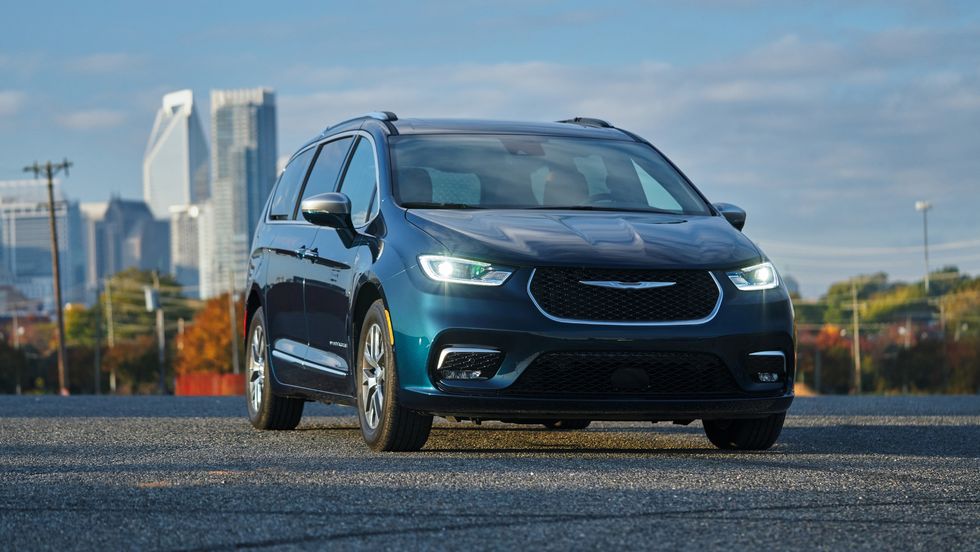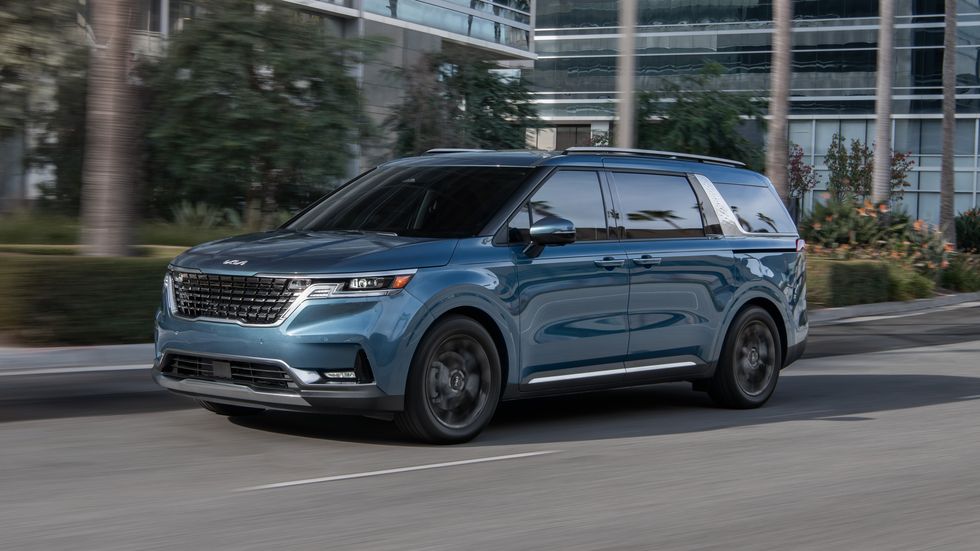- The IIHS has released a moderate overlap crash test analysis for minivans, and the results might surprise you.
- Front seat safety is superb in the four remaining minivans, but analysis of back seat safety shows significant struggles from all four manufacturers.
- Kia, Toyota, Honda, and Chrysler received marginal or poor back seat safety ratings due to submarining, excessive neck movement, and a lack of airbag deployment.
Earlier this year, we reported on a safety feature that is often overlooked, particularly in minivans and three-row SUVs. It was a shock to learn that seatbelt reminder chimes are loosely federally mandated, particularly for rear seat passengers. In fact, current federal regulations don’t require any seatbelt reminders beyond the driver’s seat.
Naturally, the Insurance Institute for Highway Safety took issue with this, reporting that such lackluster seatbelt reminders were leading to an increased injury rate for children. More than a third of 4-12-year-old children killed in crashes were unrestrained, according to crash data from the National Highway Traffic Safety Administration.
This content is imported from youTube. You may be able to find the same content in another format, or you may be able to find more information, at their web site.
Additionally, the IIHS found that most manufacturers stick to the minimum chime time required to pass federal regulations, despite research showing that longer duration or even indefinite reminders can increase belt use by more than 30%. However, new crash test results indicate that just being buckled in doesn’t guarantee a high level of safety, either.
Admittedly, the modern minivan market is sparse, as theoretically cooler SUVs took over family hauling responsibilities. However, Toyota, Honda, Kia, and Chrysler are keeping the segment alive in 2023, with Kia being the newest entrant in the class. At a glance, crash test results for all of these minivans show proper modern safety standards.
In fact, all four models receive the highest rating of good across the board in front seat safety, save for a single markdown due to leg and foot injury potential in the 2023 Toyota Sienna. Spin your head around, however, and the picture in the rear two rows of seats isn’t pretty, according to updated IIHS moderate overlap crash test data.
“In the updated test, a second dummy is positioned in the second row behind the driver. The driver dummy is the size of an average adult man. The rear dummy is the size of a small woman or 12-year-old child. IIHS researchers also developed new metrics that focus on the injuries most frequently seen in back seat passengers,” the IIHS report reads.
In order to earn top marks, there can’t be an excessive risk of injury to the head, neck, chest, or thighs of either dummy. Additionally, neither dummy should submarine under the seatbelt during the crash test. Finally, the dummies must remain a safe distance from the front seatback and the rest of the vehicle’s interior, in order to limit head injuries.
All four minivans struggled in this test, with the Sienna, Chrysler Pacifica, and Kia Carnival receiving marginal grades, one step above the lowest grade of poor. Honda’s Odyssey performed the worst, ultimately receiving an overall safety rating of poor. But what exactly went so wrong in these tests?
For starters, the throughline in all four vans was the lack of adequate chest protection for children in the rear seats, with the whole lot receiving marginal level chest protection.
Proper head protection was also difficult for most manufacturers, though the Sienna equipped with seatbelt pre-tensioners and force limiters managed to limit such injuries.
However, these additional safety devices didn’t prevent the rear dummy from submarining in the Toyota, with the seatbelt inevitably latching onto the dummy’s neck.
Kia’s Carnival and the Chrysler Pacifica also struggled with excessive seatbelt force, though it was focused on the chest in both models. The side curtain airbags on the Pacifica also failed to deploy.
Notably, the seatbelt forces on the dummy’s neck in the Kia Carnival were much higher than those in the Pacifica or Sienna. Even so, the Kia, Chrysler, and Toyota fall into similar categories of protectiveness. Honda’s Odyssey, however, struggled significantly with the updated moderate overlap crash test.
Specifically, the forces on the head and neck were even higher in the Honda, and the rear seatbelt allowed the dummy’s head to come too close to the front seatback. Altogether, the Odyssey poses the highest risk of injury for rear-seat passengers, a space that is likely to be occupied in a minivan.
“The restraint systems in all four vehicles leave the second-row occupant vulnerable to chest injuries, either because of excessive belt forces or poor belt-positioning,” said Jessica Jermakian, IIHS Vice President of Vehicle Research. “That’s concerning because those injuries can be life-threatening.”
Federal regulators are considering mandating rear seatbelt reminders. Do you think these chimes and audible reminders should be mandatory for backseat passengers? Please share your thoughts below.
Associate Editor
A New York transplant hailing from the Pacific Northwest, Emmet White has a passion for anything that goes: cars, bicycles, planes, and motorcycles. After learning to ride at 17, Emmet worked in the motorcycle industry before joining Autoweek in 2022. The woes of alternate side parking have kept his fleet moderate, with a 2014 Volkswagen Jetta GLI and a 2003 Honda Nighthawk 750 street parked in his South Brooklyn community.
Read the full article here




